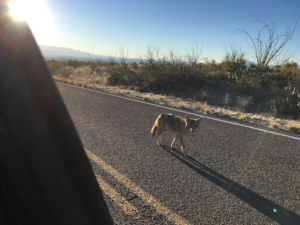“All around the Mulberry bush, the farmer chased the weasel…”
Morus alba, White Mulberry, and Morus rubra, Red Mulberry, are both trees. There is no Mulberry bush. Is this some mythical plant that exists only in the imagination? Those who study children’s nursery rhymes (I don’t think it’s a full-time job) claim that it simply fits the poetic meter better than “bramble bush” or other such alternatives, but I offer a different theory: M. alba is an aggressively invasive pest that is often cut down, and resprouts vigorously from the stump. The result is something that can be called a Mulberry bush (although the more technical term would be a ‘coppiced Mulberry’).
Red Mulberry is native to almost the entirety of the United States east of the Rockies, White Mulberry to central China. Both reach a maximum height of around 65 feet, with a wide spread, and can be difficult to distinguish. (White tends to have a glossier leaf, smaller buds and fruit, and pink-brown stems when compared to Red). Red is uncommon, but in urban environments White Mulberry is extremely common, being one of the most prolific weed trees. Unmaintained property tends to come up in Tree of Heaven, White Mulberry, and if you’re lucky, the native ‘trash maples’ Silver and Boxelder. While these 2 native trees are akin to raccoons and possums – unwanted close to our homes, but endemic to our area and cute in their way – the exotic invasives are the Norway rat or German cockroach. They cause serious headaches for land managers of all kinds, and are extremely difficult to eradicate.
The fruit of both species is edible, and quite delicious when fully ripe, and so the invasive form has endeared itself to many of us who have childhood memories of munching on them. Similar to blackberries, they are also beloved by wildlife of all kinds, particularly birds. As we grow older and find ourselves scrubbing purple bird poop off of cars, driveways and patios the affection withers. That colorful poop is full of seeds that germinate easily and are responsible for M. alba’s aggressive spread. Red Mulberry on the other hand is restricted to low, moist and shady woodlands, not an aggressive species at all, although the fruit is superior and a favorite of many country dwellers. It deserves to be planted more but unfortunately its reputation is somewhat sullied by association.
White Mulberry is the sole food source of the SilkWorm, and was introduced to North America in an attempt to start a local silk industry. That didn’t pan out, but the tree liked its new home. So here we are, stuck with an invasive species with little benefit besides the tasty but troublesome fruit. If you see one, cut it down, preferably when it’s still small. Either chemically treat, dig or grind out the stump so it won’t resprout. Our native ecosystems will thank you, and you’ll have a much easier time catching weasels.
(In searching for pictures of M. alba I drove down a random alley in South St. Louis, and passed perhaps 20 specimens along fences, under gutters, behind dumpsters…the picture I selected captures the true essence of this species.)
Picture: The keen observer will notice a Mulberry branch in the foreground, and a Mulberry tree behind the Corvette with flat tires, growing out of an overgrown fence.




